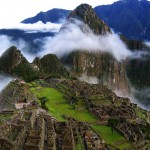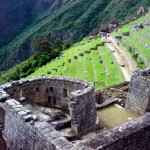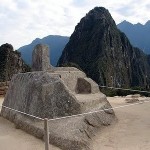By Myrsini Hamakioti (A Class)
One of the world’s great wonders, Machu Picchu is the Holy Grail for any traveler visiting South America. In a spectacular location, it’s the best-known archaeological site on the continent, with over 2500 people arriving daily.
Historians believe Machu Picchu was built at the height of the Inca Empire, which dominated western South America in the 15th and 16th centuries. Some of them support that Machu Picchu served as a royal estate for Inca emperors and nobles. Others have theorized that it was a religious site, pointing to its proximity to mountains and other geographical features that the Incas held sacred. Dozens of alternate hypotheses have cropped up in the years since Machu Picchu was first unveiled to the world, with scholars variously interpreting it as a prison, a trade hub, or a station for testing new crops, among many examples.
It was abandoned an estimated 100 years after its construction, probably around the time the Spanish began their conquest of the mighty pre-Columbian civilization in the 1530s, and remained in the dark for almost 4 centuries. In the summer of 1911 the American archaeologist Hiram Bingham arrived in Peru with a small team of explorers hoping to find Vilcabamba, the last Inca stronghold to fall to the Spanish. Traveling on foot and by mule, Bingham and his team made their way from Cuzco into the Urubamba Valley, where a local farmer told them of some ruins located at the top of a nearby mountain. The farmer called the mountain Machu Picchu, which translates to “old peak” in the native Quechua language. On July 24, after a tough climb to the mountain’s ridge in cold and drizzly weather, Bingham met a small group of peasants who showed him the rest of the way.
Machu Picchu is made up of more than 150 buildings ranging from baths and houses to temples and sanctuaries.
In the midst of a tropical mountain forest on the eastern slopes of the Peruvian Andes, Machu Picchu’s walls, terraces, stairways and ramps blend seamlessly into its natural setting. The site’s finely crafted stonework, terraced fields and sophisticated irrigation system bear witness to the Inca civilization’s architectural, agricultural and engineering prowess. Its central buildings are prime examples of a masonry technique mastered by the Incas in which stones were cut to fit together without mortar.
Archaeologists have identified several distinct sectors that together comprise the city, including a farming zone, a residential neighborhood, a royal district and a sacred area. Machu Picchu’s most distinct and famous structures include the Temple of the Sun and the Intihuatana stone, a sculpted granite rock that is believed to have functioned as a solar clock or calendar.
Today, hundreds of thousands of people tramp through Machu Picchu every year, braving crowds and landslides to see the sun set over its towering stone monuments and marvel at the mysterious splendor of one of the world’s most famous manmade wonders.
Temple of the Sun
Intihuatana Stone
Bibliography
- http://www.lonelyplanet.com/peru/machu-picchu/travel-tips-and-articles/how-to-reach-machu-picchu-without-the-inca-trail?ctv=control
- http://www.lonelyplanet.com/peru/machu-picchu
- http://www.history.com/topics/machu-picchu
- http://www.lonelyplanet.com/peru/machu-picchu/images
- http://www.livescience.com/22869-machu-picchu.html
- http://www.history.com/topics/machu-picchu/pictures/machu-picchu/machu_picchu_mosaic_picture_-_december_2006
- http://sacredsites.com/americas/peru/machu_picchu.html
- http://el.wikipedia.org/wiki/%CE%9C%CE%AC%CF%84%CF%83%CE%BF%CF%85_%CE%A0%CE%AF%CF%84%CF%83%CE%BF%CF%85
- http://en.wikipedia.org/wiki/Machu_Picchu
- http://www.peru-machu-picchu.com/history.php






